adem
d'ethnomusicologie
Dances of Azerbaijan and Georgia
With Mariya Khan
Orient | Dance
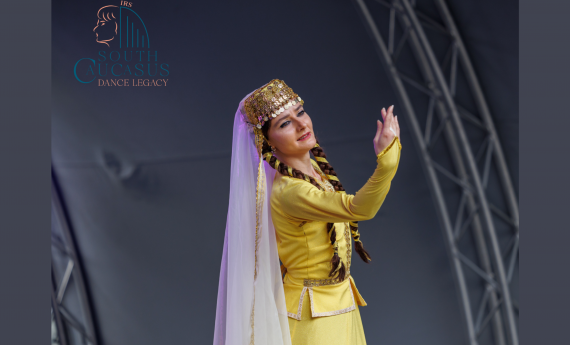
Traditional Dances of Azerbaijan
Azerbaijani dances are the result of several centuries of history in the Caucasus region, where several ethnic groups cohabited before forming the Republic of Azerbaijan. On the ancient Silk Roads, at the crossroads of its great neighbors Turkey to the west, Iran to the south, Central Asia to the east and Russia to the north, the Caucasus is characterized by an astonishing ethnic, linguistic and cultural diversity, which reflects an often tumultuous past.
The dances originate from ancient folk rites that took place during events such as hunting, wedding ceremonies, spring greetings, etc. Then, in medieval times, different types of dances were created at the court of the Eastern kings. These dances belong to several distinct categories:
- work dances (Chobani - the dance of the shepherd, Terekeme - the dance of nomads),
- ritual dances (Vagzali - women dance it during wedding ceremonies, Yalli - circle dance),
- military dances (Djenge, Gaytagi, Igidler - only danced by men),
- traditional women's dances (Uzundere, Nelbeki or saucer dance, Qabal reqsi, or dance with a musical instrument, Turadji or bird dance, Sari gelin), etc.
These dances differ greatly from each other, and according to the male or female interpretations. The usual rhythmic time for women is 3/4, while that of men is 2/4. Its development is conditioned by the national costume. A long skirt forces the sharpness of the leg movement, while the main attention is given to the upper part of the body: the head, the arm and hand movements, as well as the facial expression of the dancer. However, some dances are very fast and are exclusively performed by women.
In contrast to women's dances, men's dances are mainly based on very fast footwork. The dancer's movements are technically complex, defining the spirit and energy of Azeri male dances.
Traditionally, Azeri dances are accompanied by national musical instruments such as the zurna (flute), kamantcha and tar (stringed instruments), and nagara (percussion).
Traditional Dances of Georgia
Located in the Caucasus region, Georgia (from its endonym Saqartvelo) is proud of its rich and ancient history and culture, of which traditional dances are an integral part and part of the country's cultural heritage. Reflecting ancient traditions, religious rituals, customs, traditional music, historical events, geographical and linguistic diversity, as well as the nature of the Caucasus, Georgian dances are very complex as well as varied, and have a unique character in the world.
Each dance has its own history - wedding dances, war dances, mountain dances, romantic dances, festive dances, dances of aristocrats and merchants. Here are some examples:
- Kartuli, a courtly and romantic dance, among the oldest Georgian dances, widespread in all regions of the country. Here the man dances dignified and majestic, like an eagle, his gaze fixed on the woman, graceful and delicate, gliding on the ground like a swan, always looking at the ground with arms outstretched, symbolizing the affection that she bears him.
- Acharuli, a joyful and festive dance from Adjara. Men and women dance together in a more informal and provocative way; the fast movements of the men contrast with those of the women, more supple and undulating.
- Mtiuluri, mountain dance, a typical representation of the warlike and bellicose spirit of the Caucasian mountain people; the male movements are hard and accentuated, showing the peripatetic nature of the fights; the female movements are fast, but still graceful and elegant. The famous technique of dancing on pointe is used, but with the toes curled up.
- Kintoouri, city dance, the embodiment of the kinto character, merchant of the four seasons in ancient Tbilisi. The dance is light, even comical, where the movements of the dancers symbolize the extravagant and reckless character of these merchants.
- Samaia, a gentle dance of women dedicated to Queen Tamara, reincarnating the 3 stages of her glory: the young princess, the wise mother and the powerful queen.
Step by step, students will learn to use their whole body, in accordance with styles and techniques from the vast diversity of Georgian dances. One of the goals will be to learn different choreographies to dance on stage, but also to feel comfortable dancing to traditional Georgian music on occasions, or simply to have fun and allow the body to breathe by giving it a "new breath", a form of well-being for oneself.
Bio
Mariya began her journey into traditional Azerbaijani dances at the age of 11, with the GOYARCHIN choreographic troupe in Ganja, her hometown in Azerbaijan, led by Ramiz and Anna Mamedov. Subsequently, she joined the GULSHEN State National Ensemble, where she deepened her training and toured the country for several years.
Following this time, Mariya pursued her studies in various countries while continuing to dance and share the dances of her homeland.
In 2011, she moved to Geneva, where she started teaching Azerbaijani dances at ADEM (Ateliers d’ethnomusicologie), while working a day job. By getting involved in the local cultural life, she enriched her journey by collaborating with renowned artists such as Mr. Farmayil Pashayev, an Honored Artist of the Republic of Azerbaijan, during her regular visits to her home country. Additionally, she began training with Ms. Nino Turabelidze, a world-renowned Georgian folk artist, former soloist of the legendary SUKHISHVILI, the Georgian National Ballet, and founder of NABADI, a unique Folk Theater of Georgia in Tbilisi.
In 2021, her work with children bore fruit, giving rise to her Azerbaijani dance group, IRS, meaning "heritage." Since its creation, IRS has participated in numerous cultural events in Geneva and the surrounding areas, always garnering admiration thanks to the charm of these young stars.
Mariya enthusiastically shares her love for these traditions, offering a rich and diverse cultural experience to her students and audiences.
PLACE :
ADEM MARAICHERS, 44, rue des Maraîchers - 1205 Geneva
HORAIRES :
Dances of Azerbaijan: Friday 19h15 to 21h45
Dances of Georgia: Wednesday 20h to 22h
FEES :
Adults : 30 frs
Cartes de 5 /10 cours, payables à l’avance
Free trial lesson
CONTACT :
Email : az.ge.dances@gmail.com
For other locations, times and prices, please contact the teacher directly.
Youtube : https://www.youtube.com/@az_ge_dances
Photos : ADEM, Association Akhtar, Lauz’One Festival
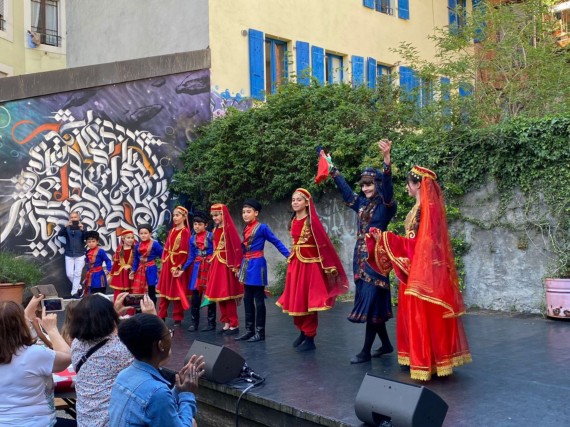
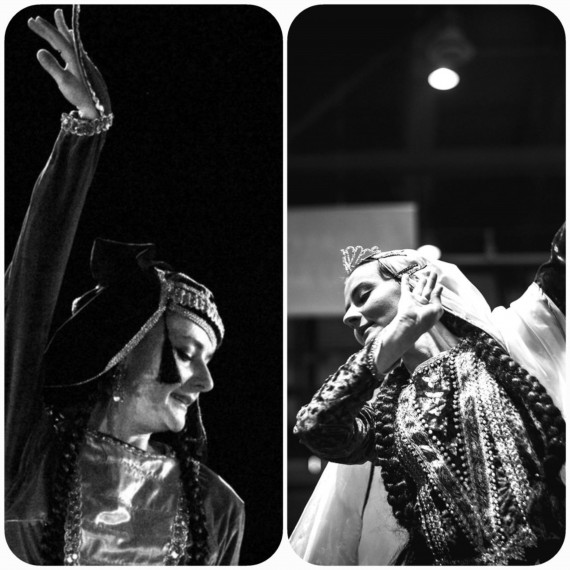
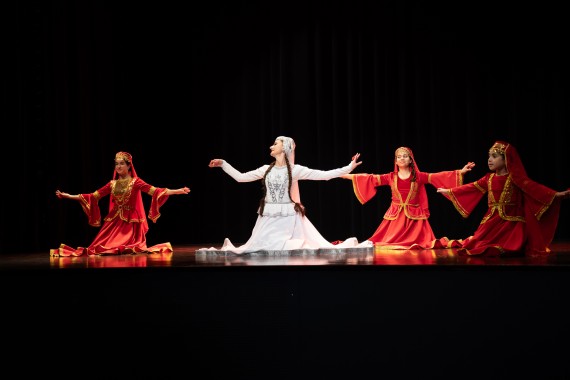
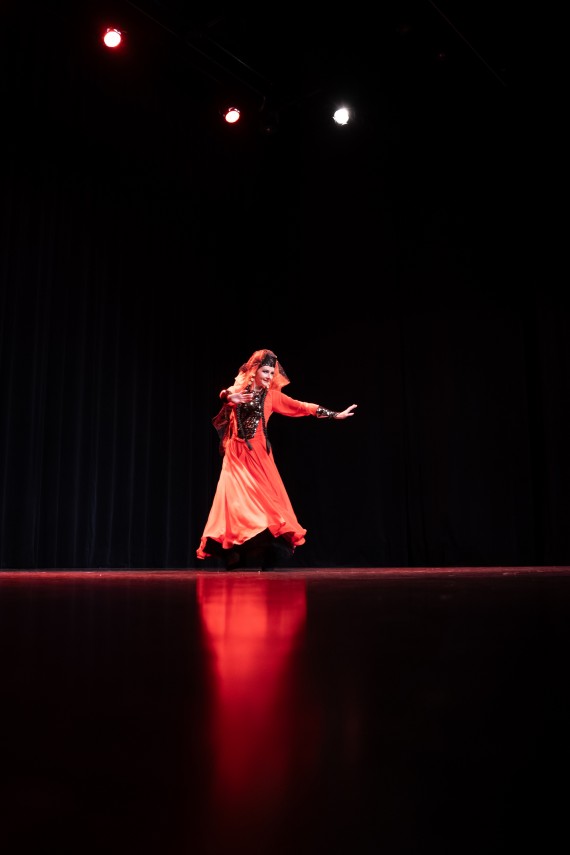
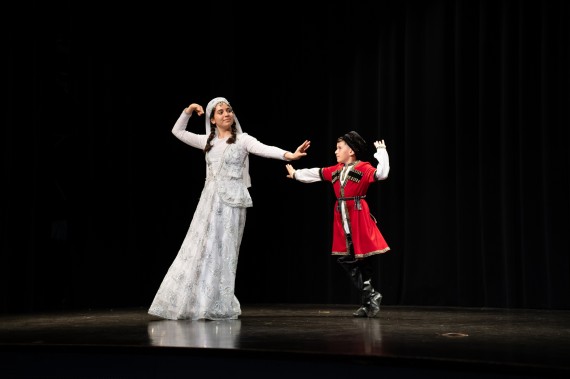
Discover other classes
Rubab and music from Afghanistan
NEW CLASS & Group class around the Afghan repertoire coming soon
Mathieu Clavel
Of Pashtun origin, the rubab (or rabab, robab) with its unique sounds is an instrument of choice in this area to accompany Sufi poems and popular songs.
Flamenco's workshops
Manuel Castan / Daniel Renzi
2 teachers for different approaches to developing flamenco practice.